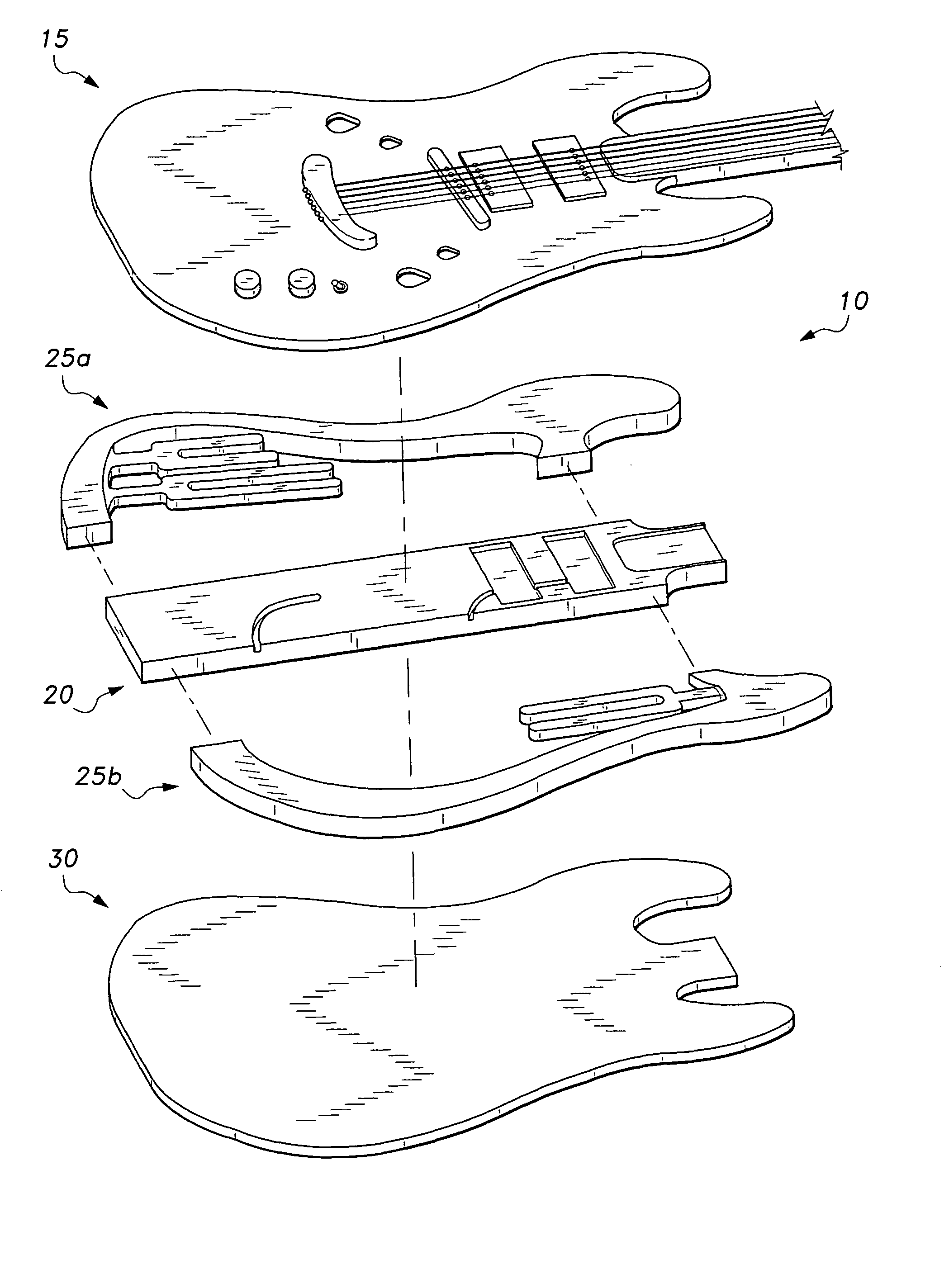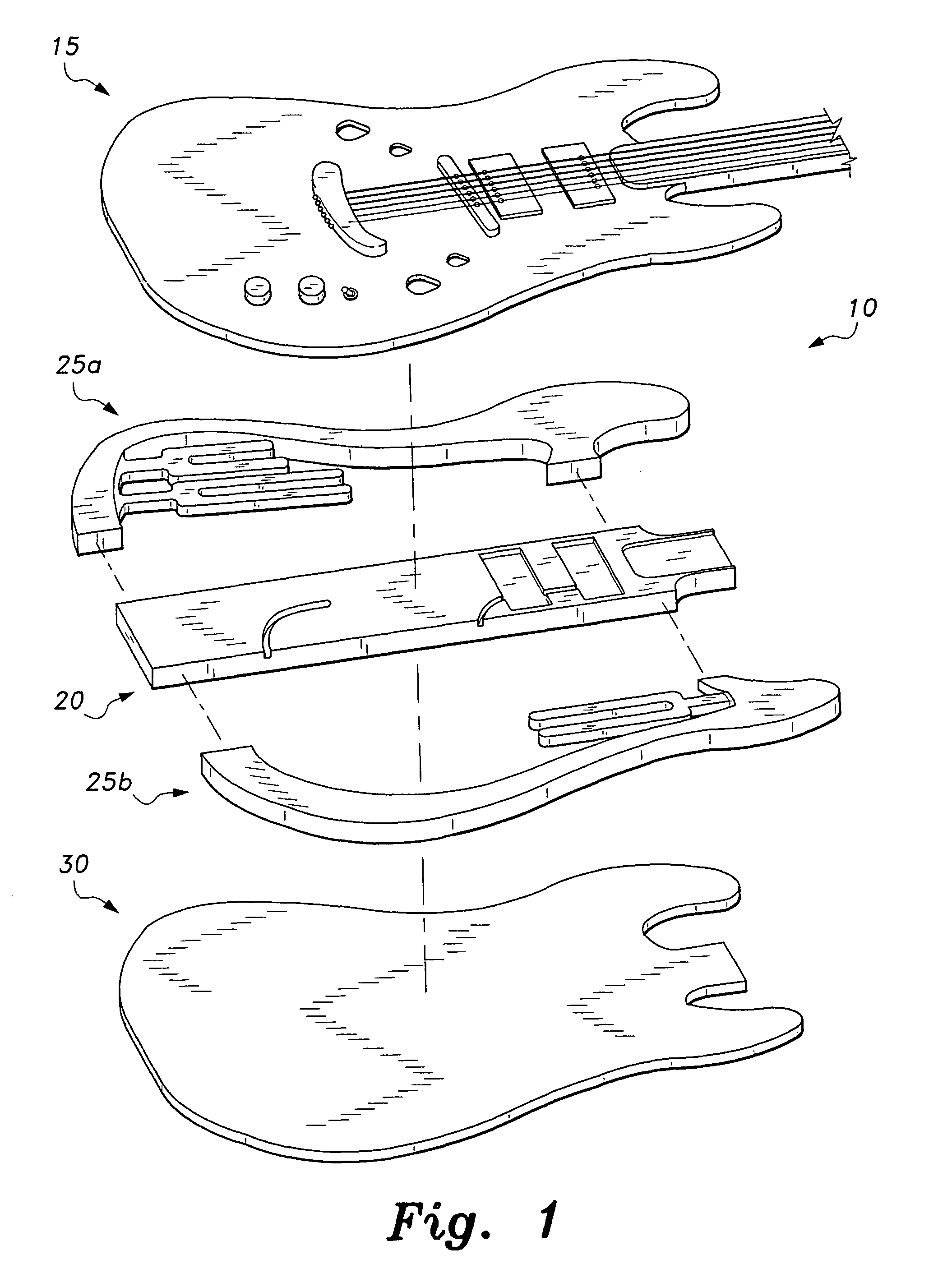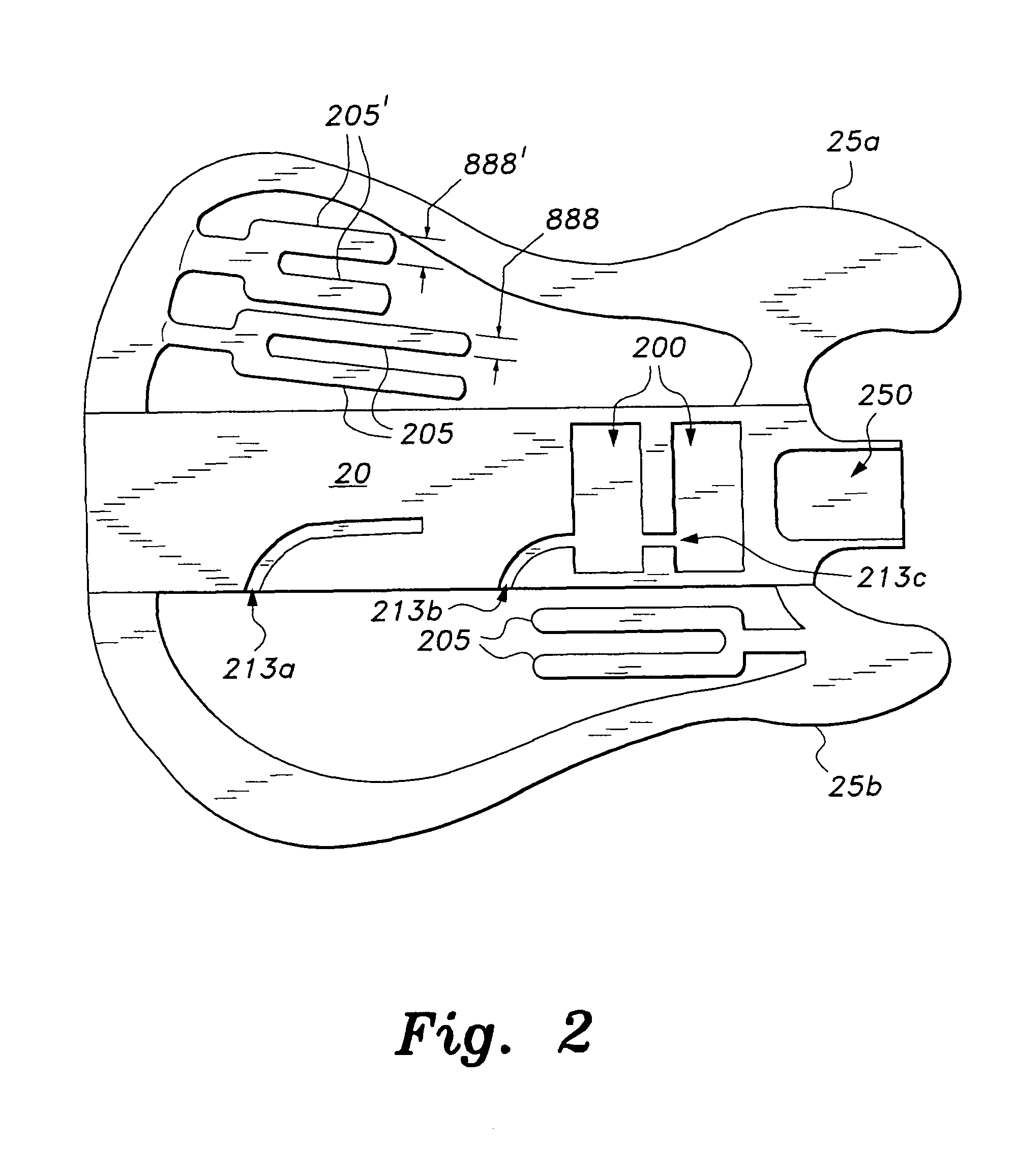Semi-hollow body for stringed instruments
a hollow-body guitar and instrument technology, applied in the field of stringed instruments, can solve the problems of increasing the amplitude of the original string vibration, and the characteristics of the sound produced generally lack the resonant complexity of a hollow-body guitar, so as to achieve the effect of reducing the problem of acoustic feedback
- Summary
- Abstract
- Description
- Claims
- Application Information
AI Technical Summary
Benefits of technology
Problems solved by technology
Method used
Image
Examples
Embodiment Construction
[0020]As shown in FIGS. 1-4, in a first embodiment, the semi-hollow body 10 for stringed instruments may include a plurality of elongate resonance-enhancing baffle pairs 205, each resonance-enhancing baffle pair 205 having a bifurcated prong shape resembling a tuning fork in appearance and acoustic function. The resonance-enhancing baffle pairs 205 are disposed within a peripheral area of the instrument body (within a space defined by the wings 25a, 25b and the central core 20) and create various combinations of baffled regions and hollow, un-baffled regions in a resonance chamber of the semi-hollow body 10. The solid, central core region 20 separates an upper resonance chamber inside of top body portion wing 25a from a lower resonance chamber inside of bottom body portion wing 25b. During manufacture, the wings 25a and 25b are glued onto the central core 20.
[0021]Alternatively, as shown in FIGS. 5 and 6, individual elongate resonance-enhancing baffles 999 that are shaped and acoust...
PUM
 Login to View More
Login to View More Abstract
Description
Claims
Application Information
 Login to View More
Login to View More - R&D
- Intellectual Property
- Life Sciences
- Materials
- Tech Scout
- Unparalleled Data Quality
- Higher Quality Content
- 60% Fewer Hallucinations
Browse by: Latest US Patents, China's latest patents, Technical Efficacy Thesaurus, Application Domain, Technology Topic, Popular Technical Reports.
© 2025 PatSnap. All rights reserved.Legal|Privacy policy|Modern Slavery Act Transparency Statement|Sitemap|About US| Contact US: help@patsnap.com



